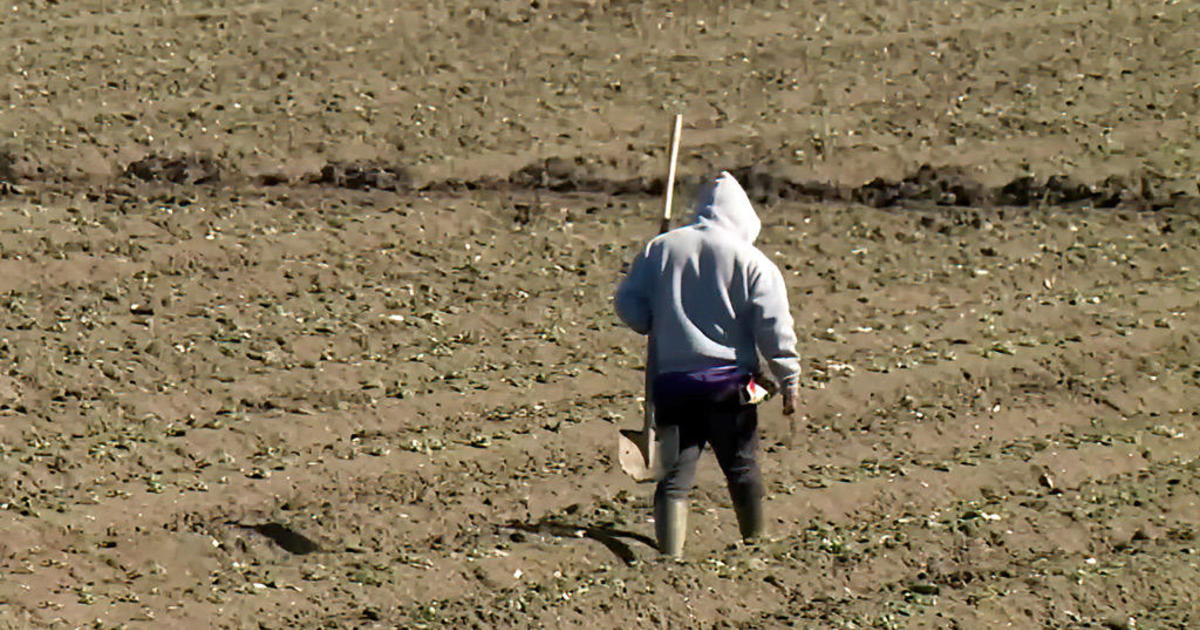1,000 Brooding Octopuses Found Off Monterey Coast
MONTEREY (AP/CBS SF) — Scientists exploring the sea floor off the coast of central California for deep-water coral and sponges instead found an unprecedented sight: Hundreds of octopuses tucked between rocks with their tentacles inverted and covering groups of white eggs — a posture that is common among brooding females.
The cluster of more than 1,000 gray octopuses latching on to clean, dark rock was found last week in the Davidson Seamount, an underwater extinct volcano in the Monterey Bay National Marine Sanctuary, Chad King, a marine biologist at the sanctuary, said Tuesday.
The area is about 75 miles west of Hearst Castle.
"This is an event that's not been seen before, not this many deep water octopi, brooding on eggs at this depth of water, 12,000 feet down," added Scott Kathy, who also works at the sanctuary. "That's pretty exciting for scientists on the mission."
The team was on an 11-day cruise to explore Davidson Seamount.
A submersible's camera found the creatures on Oct. 23 nearly 2 miles below the surface during the first dive by the Nautilus, a vessel exploring the sanctuary and livestreaming its findings.
"This is certainly the largest cluster of brooding deep-sea octopuses that has ever been spotted," added King, who is also the chief scientist aboard the Nautilus, a research vessel with a team from the National Oceanic and Atmospheric Administration and the nonprofit Ocean Exploration Trust.
It was the first time scientists have seen a cluster of Muusoctopus robustus octopuses off California's coast, King said.
This kind of aggregation of deep-sea octopuses has been reported only once before, when earlier this year a smaller group of about 100 were spotted brooding eggs in warm ocean water off the Central American nation of Costa Rica, the nonprofit said.
The octopuses lined up in the cracks of the clean rocks near shimmering fluid seeps that looked "kind of like a heat wave off the pavement on a hot day," which suggests warm water, King said. But he added the submersible was not equipped to test the water for temperature or chemicals.
"What's apparently happening there is you've got some warmer water seeping up through the strata there and that was not expected at all because this volcano has been dormant for some 9.8 million years," said Kathey.
It's not clear why the creatures were gathered near fluid seeps that are associated with shrimp, anemones, snails and other animals.
"Females can sit on their eggs for four years before they hatch, so being in slightly warmer water might cut their brooding time or make their offspring more healthy," said Kathey.
"It could be because the fluid seeping out of the rock is warm or maybe they like the clean, dark rock with no sediment," King said. "There are so many questions that we have no answers for."
The area where the researchers were exploring was only recently added as a protected area, and because of its new status as a sanctuary, it will receive federal environmental protections.
© Copyright 2018 CBS Broadcasting Inc. All Rights Reserved. The Associated Press contributed to this report.



